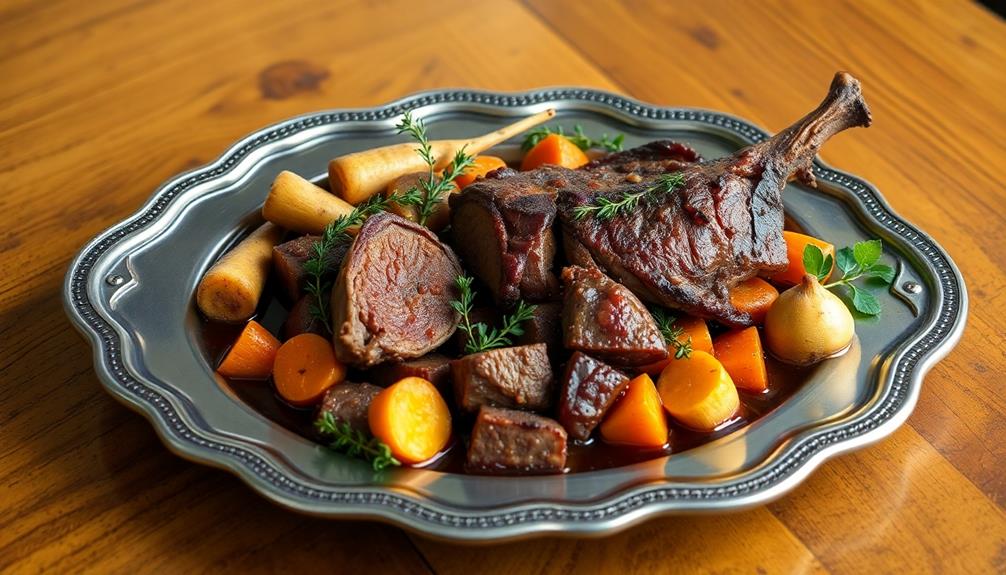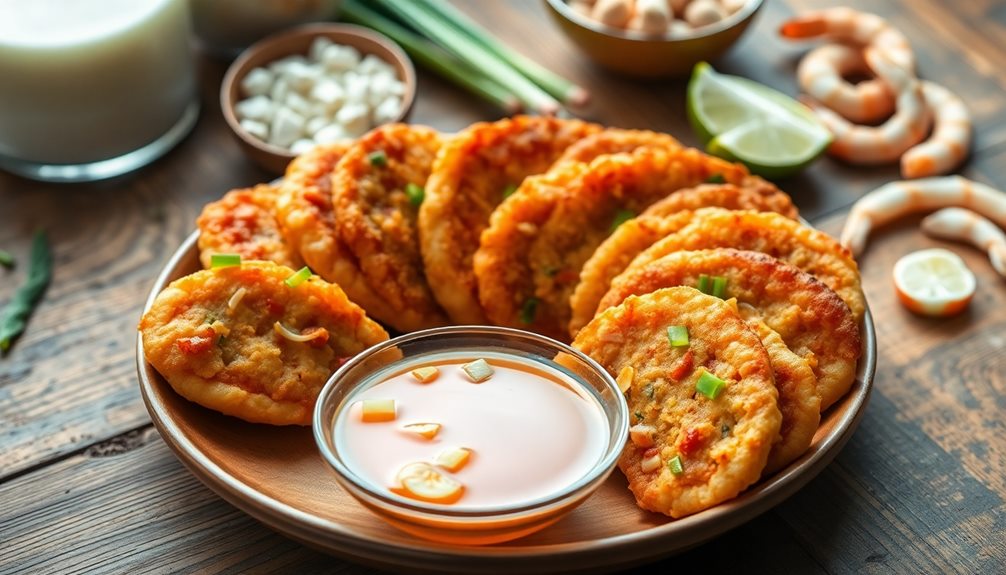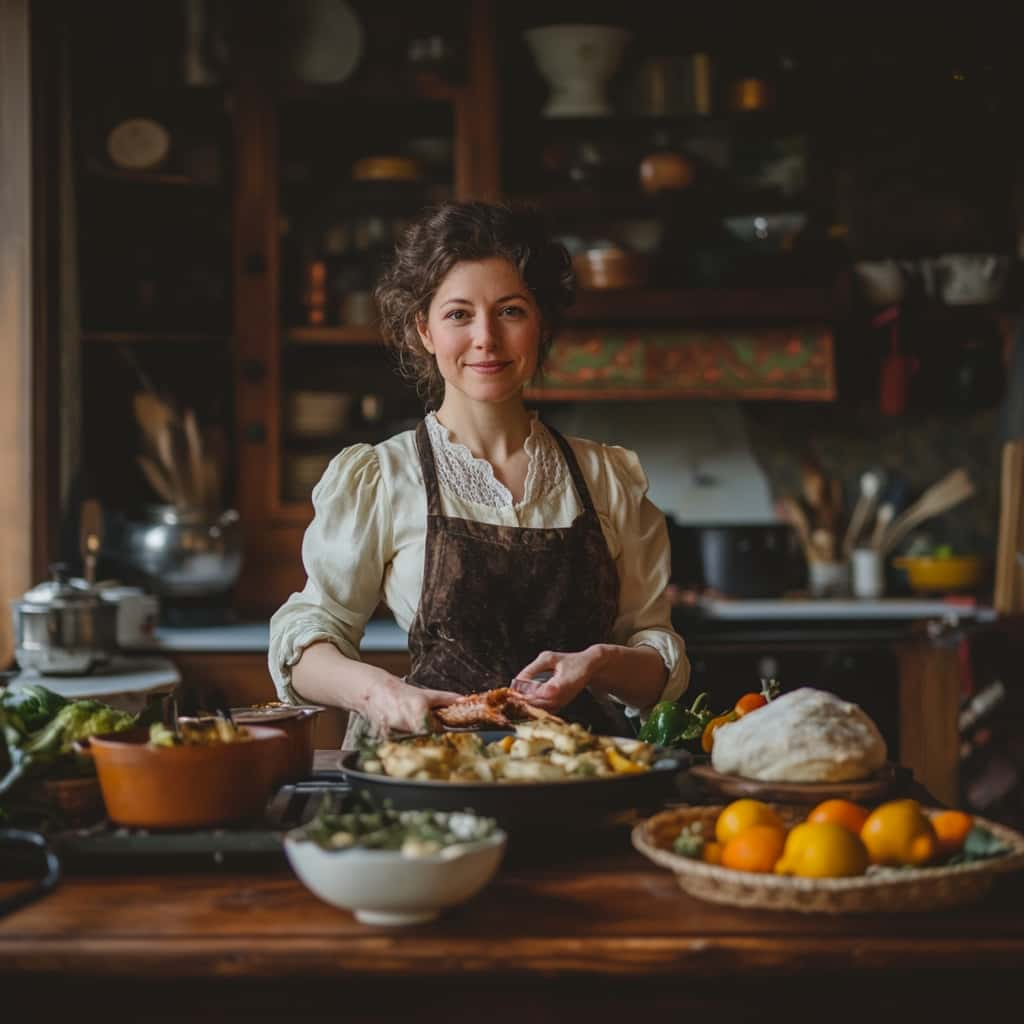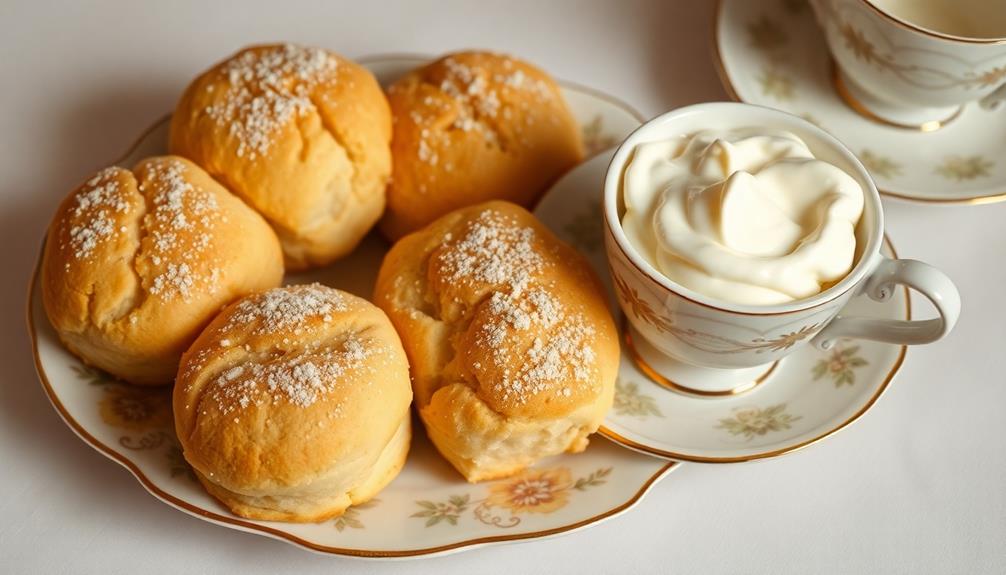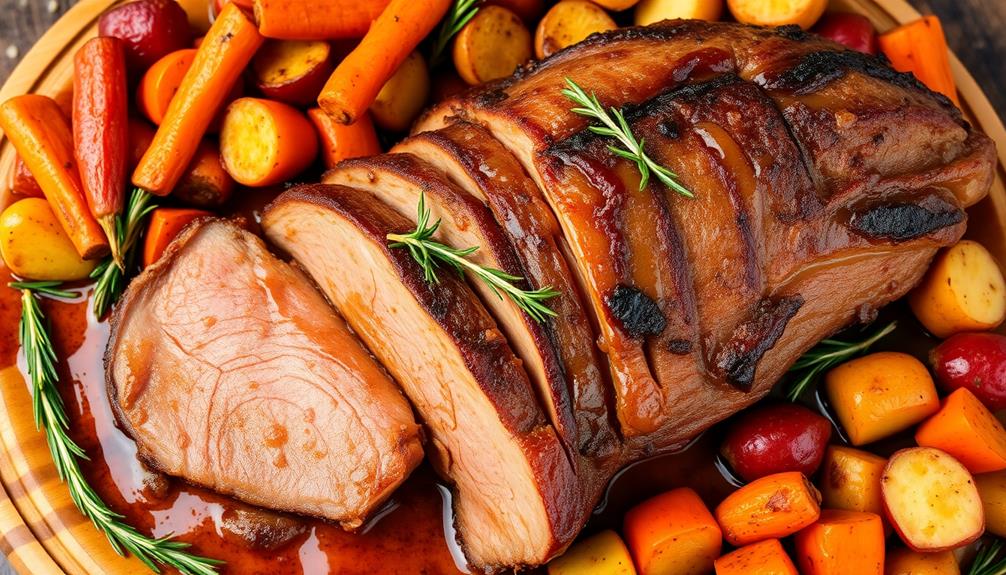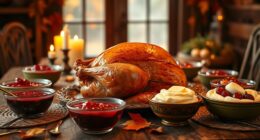Medieval feasts were lavish events that showcased wealth, influence, and social hierarchy. Intricate multi-course meals featured exotic ingredients and complex preparations, engaging the senses. Skilled labor was required to roast meats on a spit over an open flame and creatively garnish dishes. Maintaining a clean environment was crucial, as the cultural significance of food in social gatherings reflected deep traditions. Today, the legacy of medieval gastronomy lives on, inspiring contemporary cooks to recreate the rich culinary artistry of the past. Want to delve deeper into this captivating era of feasting and dining?
Key Takeaways
- Recreate the lavish grandeur of medieval feasts by showcasing exotic ingredients, intricate preparations, and elaborate centerpieces to reflect the cultural values of the time.
- Utilize traditional cooking techniques, such as open-flame cooking and spit-roasting, to capture the authentic flavors and textures of medieval banquets.
- Emphasize the importance of visual presentation by incorporating creative garnishing, vibrant colors, and textural elements to engage the senses.
- Maintain a clean and organized cooking environment to enhance the guest experience and reinforce the significance of cleanliness in social dining settings.
- Embrace the enduring legacy of medieval gastronomy by drawing inspiration from historical recipes and techniques to create a unique culinary experience.
History
Medieval feasts have a rich and fascinating history that dates back centuries. These lavish events weren't merely about indulging in sumptuous foods; they were a reflection of the social hierarchy, political power, and cultural values of the time. Nobles and royalty often used these feasts as a means to showcase their wealth, influence, and status within the community.
The menu and presentation of the dishes were carefully curated to impress and dazzle the guests, with exotic ingredients, intricate preparations, and elaborate table settings.
The traditions and customs associated with medieval feasts varied across different regions and eras, but they generally followed a similar structure. Guests were often seated according to their rank, with the most important individuals occupying the seats closest to the host.
The meal itself was a multi-course affair, with each course meticulously planned and executed. From the roasted meats and delicate pastries to the elaborate centerpieces and entertainment, every element of the feast was designed to create a truly unforgettable experience.
Recipe
Medieval Feasts: Recipe
Feasts were a central part of medieval life, both for celebrations and daily sustenance. The dishes served at these events often showcased the wealth and status of the host, with elaborate preparations and exotic ingredients. One such dish that was popular during this time period was a savory meat pie.
This hearty creation combined flavorful meats, aromatic spices, and a flaky pastry crust to create a satisfying and visually stunning centerpiece for the table. The recipe below captures the essence of this medieval delight, allowing modern cooks to recreate a taste of the past.
- 2 pounds of mixed meats (such as beef, pork, and lamb), diced
- 1 onion, finely chopped
- 3 cloves of garlic, minced
- 1 teaspoon of ground cinnamon
- 1 teaspoon of ground ginger
- 1/2 teaspoon of ground cloves
- 1/2 teaspoon of ground nutmeg
- Salt and pepper to taste
- 2 sheets of puff pastry
- 1 egg, beaten
In a large skillet, sauté the onion and garlic until softened. Add the diced meats and spices, and cook until the meat is browned and cooked through. Season with salt and pepper to taste. Allow the mixture to cool slightly.
Preheat the oven to 375°F (190°C). Line a pie dish with one sheet of puff pastry. Transfer the meat mixture to the dish and cover with the second sheet of puff pastry. Crimp the edges to seal and cut a few slits in the top to allow steam to escape. Brush the top with the beaten egg.
Bake the pie for 30-40 minutes, or until the pastry is golden brown and flaky. Allow the pie to rest for 10 minutes before slicing and serving. This dish can be served warm or at room temperature, and pairs well with a simple salad or roasted vegetables.
Cooking Steps
First, gather your ingredients and kitchen tools.
Next, chop and slice the ingredients as needed.
Then, add your desired spices and seasonings, cook the dish over an open flame, and serve it on platters with garnishes.
Step 1. Gather Ingredients and Kitchen Tools
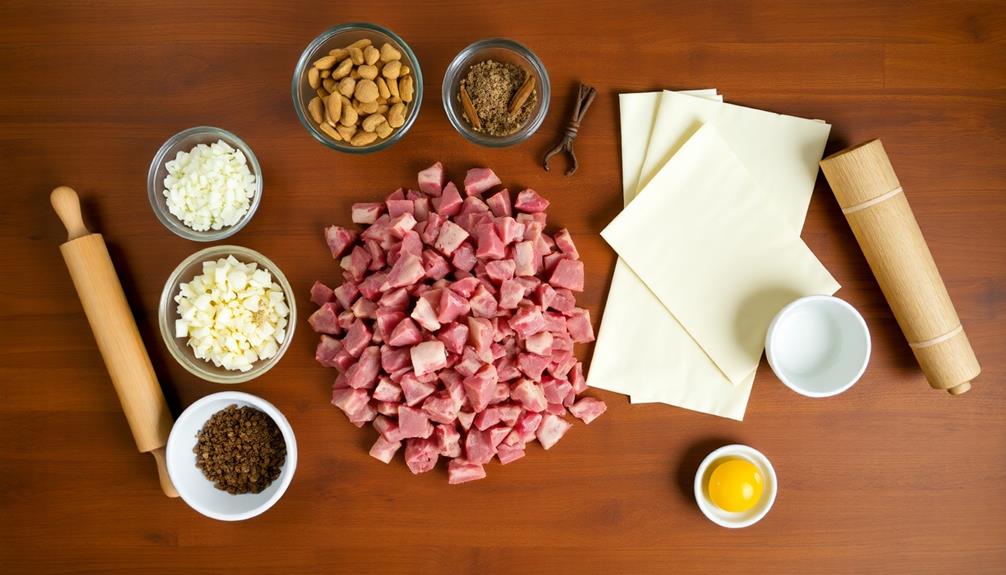
Gather your essential ingredients and kitchen tools to recreate the vibrant flavors and aromas of a medieval feast. You'll need basic staples like grains, vegetables, meat, and dairy products.
Don't forget the herbs and spices that were crucial for adding depth and complexity to medieval dishes. Invest in sturdy pots, pans, and utensils that can withstand the demands of open-flame cooking.
A spit or rotisserie will be invaluable for roasting meats. Obtain a mortar and pestle to grind spices and herbs. Gather wooden bowls, platters, and trenchers to serve your creations.
Ensure you have a reliable heat source, whether it's a fireplace, a wood-burning stove, or a modern oven. With your ingredients and tools assembled, you're ready to embark on your medieval culinary adventure, transforming simple fare into a sumptuous and authentic feast fit for a king.
Step 2. Chop and Slice Ingredients

Once you've gathered your ingredients and tools, begin chopping and slicing them to prepare for the cooking process.
Start by dicing the onions, being careful to avoid tears. Slice the carrots and parsnips into thin, even pieces. Chop the herbs, like sage and thyme, into small, fragrant pieces.
Slice the mushrooms, ensuring they're all roughly the same thickness for even cooking. If you're using meat, like chicken or beef, cut it into bite-sized cubes or strips.
Remember to use a sharp knife and a sturdy cutting board to make the task easier. Work efficiently, but take care not to rush and risk injury.
As you chop and slice, keep an eye on the various textures and sizes, aiming for consistency to ensure even cooking throughout the dish.
With your ingredients prepped, you're one step closer to creating an authentic medieval feast.
Step 3. Add Spices and Seasonings
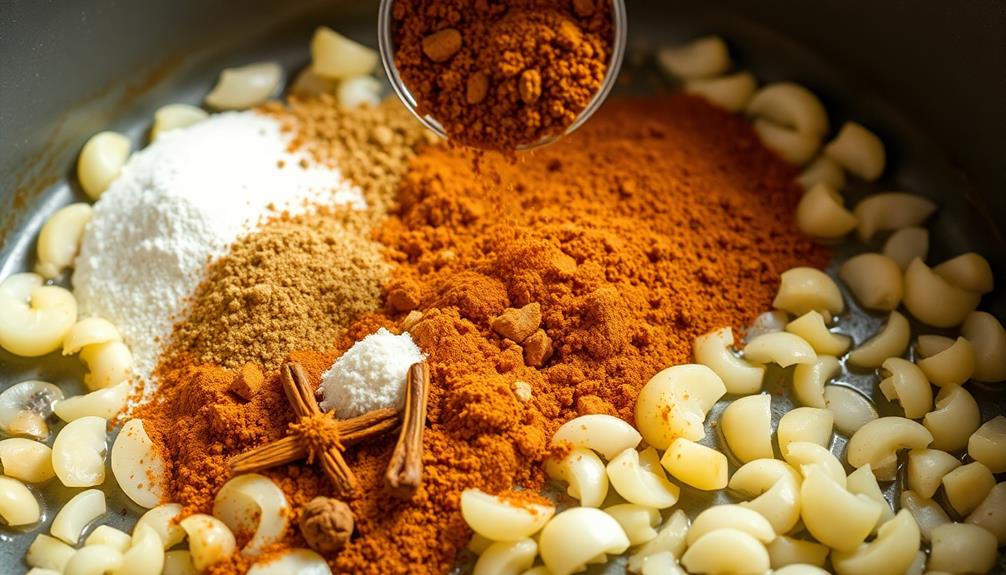
With your ingredients chopped and ready, you can now begin adding the necessary spices and seasonings to create the authentic flavors of a medieval feast.
Reach for the precious saffron, cinnamon, and cloves to infuse your dishes with warmth and complexity. Did you know that certain honey varieties, like Manuka honey, are known for their antibacterial properties, which could have been highly valued in medieval cooking?
Don't be shy with the pepper – medieval cooks favored a bold, peppery kick. Sprinkle in a touch of nutmeg, ginger, and cardamom to further enhance the aroma and depth of your creations.
Remember, spices were highly prized during the Middle Ages, so use them generously to showcase their vibrant colors and captivating scents.
As you work, take a moment to inhale the heady fragrance wafting through the air. This sensory experience was an integral part of the medieval dining ritual.
With each pinch of seasoning, you're bringing the past to life, transporting your guests to a time when the table was a canvas for culinary artistry.
Step 4. Cook Over Open Flame
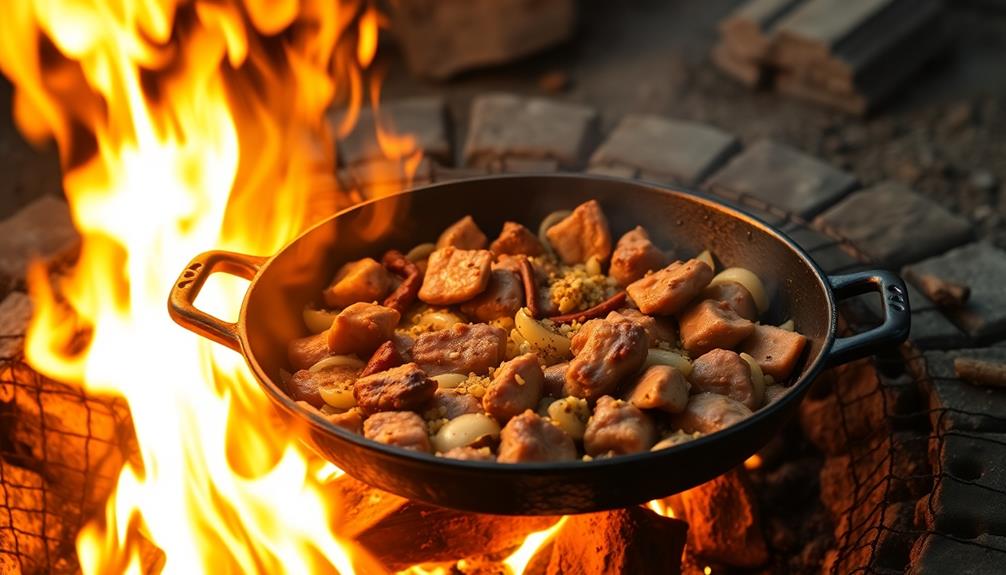
Now that you've seasoned your ingredients to perfection, it's time to bring them to life over an open flame.
Whether you're working with a roaring fireplace or a simple campfire, the key to cooking medieval-style is to harness the primal power of the flame. Carefully arrange your meats, vegetables, and breads around the perimeter of the fire, allowing the heat to envelop them.
Adjust the placement as needed, turning and basting to ensure even cooking. Don't be afraid to let the flames lick at your food – the char and smokiness will only enhance the flavors.
Keep a close eye, though, as medieval cooking can be unpredictable. Be ready to shift your ingredients, add more fuel, or quench flare-ups as they occur.
With a little practice, you'll master the art of open-flame cooking and transport your guests back to the grand halls of the Middle Ages. The aroma alone will have them eagerly anticipating each savory bite.
Step 5. Serve on Platters With Garnishes
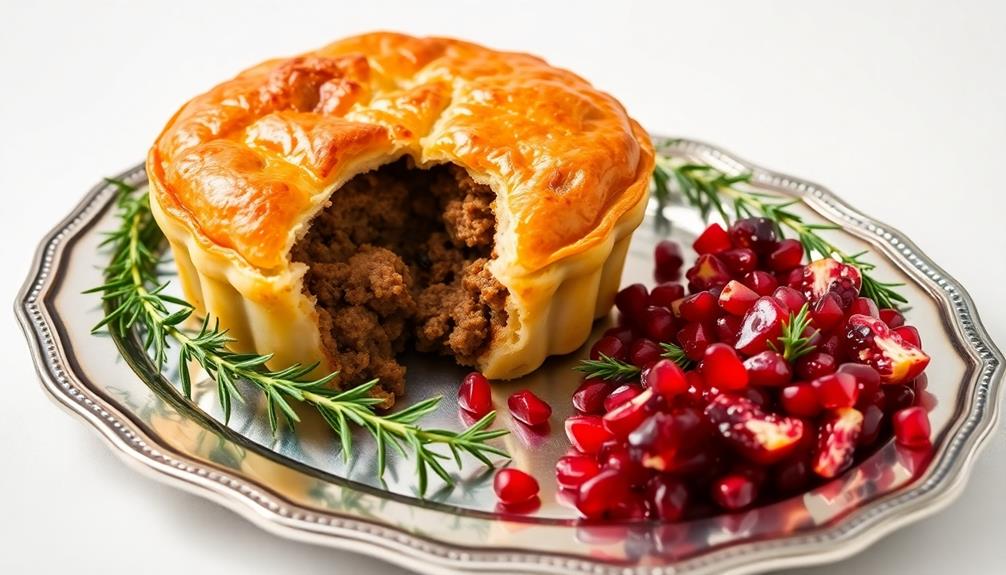
Upon completing the cooking over the open flame, arrange your delectable medieval dishes onto ornate serving platters. Maintaining a clean and organized presentation is essential, as it enhances the dining experience and promotes a sense of control and organization in daily life, which can lead to improved mental well-being.
Cover the platters with fragrant herbs and edible flowers to add both flavor and visual appeal. Place the platters on the table, ensuring they're evenly spaced and easily accessible for your guests.
Don't be afraid to get creative with your garnishes. Thinly slice fruits like apples or pears, and arrange them in intricate patterns around the edges of the platters. Sprinkle toasted nuts or seeds for a satisfying crunch.
Consider adding a drizzle of honey or a sprinkle of spices to elevate the presentation further. For an enjoyable gathering, remember that a tidy environment can reduce stress and enhance overall wellness, as discussed in health and wellness benefits of clean homes.
Final Thoughts
Reflecting on the grand medieval feasts, one can't help but appreciate the rich cultural tapestry that these events wove.
From the intricate platters adorned with vibrant garnishes to the grand spectacle of servitude, these banquets epitomized the opulence and grandeur of the era.
While the preparation and presentation of the food may seem labor-intensive by modern standards, it's important to remember that these feasts weren't merely about sustenance, but rather a means of showcasing wealth, power, and social status.
Today, as we strive to recreate these historical culinary masterpieces, we're reminded of the enduring legacy of medieval gastronomy and the cultural significance it held.
Frequently Asked Questions
What Tools Were Used in Medieval Kitchens?
Medieval kitchens utilized a variety of tools like spits, cauldrons, mortars, and pestles for preparing meals. You'd find knives, cutting boards, and ladles essential for chopping, mixing, and serving. These time-tested tools helped create the flavors of the past.
How Did Medieval Cooks Preserve Food?
To preserve food, medieval cooks used techniques like drying, salting, smoking, and pickling. They stored preserved foods in cool, dry places to extend their shelf life and prevent spoilage.
What Were the Typical Table Manners in the Middle Ages?
In the Middle Ages, table manners were quite different from today. You'd use your hands to eat, sometimes even right from the communal dishes. Napkins were rare, and burping or picking your teeth at the table were perfectly acceptable behaviors.
How Did the Nobility's Feasts Differ From Common Folk?
The nobility's feasts were far more lavish and ostentatious than the common folk's meals. They'd enjoy a wide variety of exotic dishes, while commoners made do with simpler fare and limited ingredients.
What Were the Common Sources of Entertainment During Medieval Feasts?
During medieval feasts, common forms of entertainment included music, dancing, storytelling, and theatrical performances. Jesters, minstrels, and jugglers often provided amusement, while nobles engaged in more elaborate pastimes like jousting and chess.
